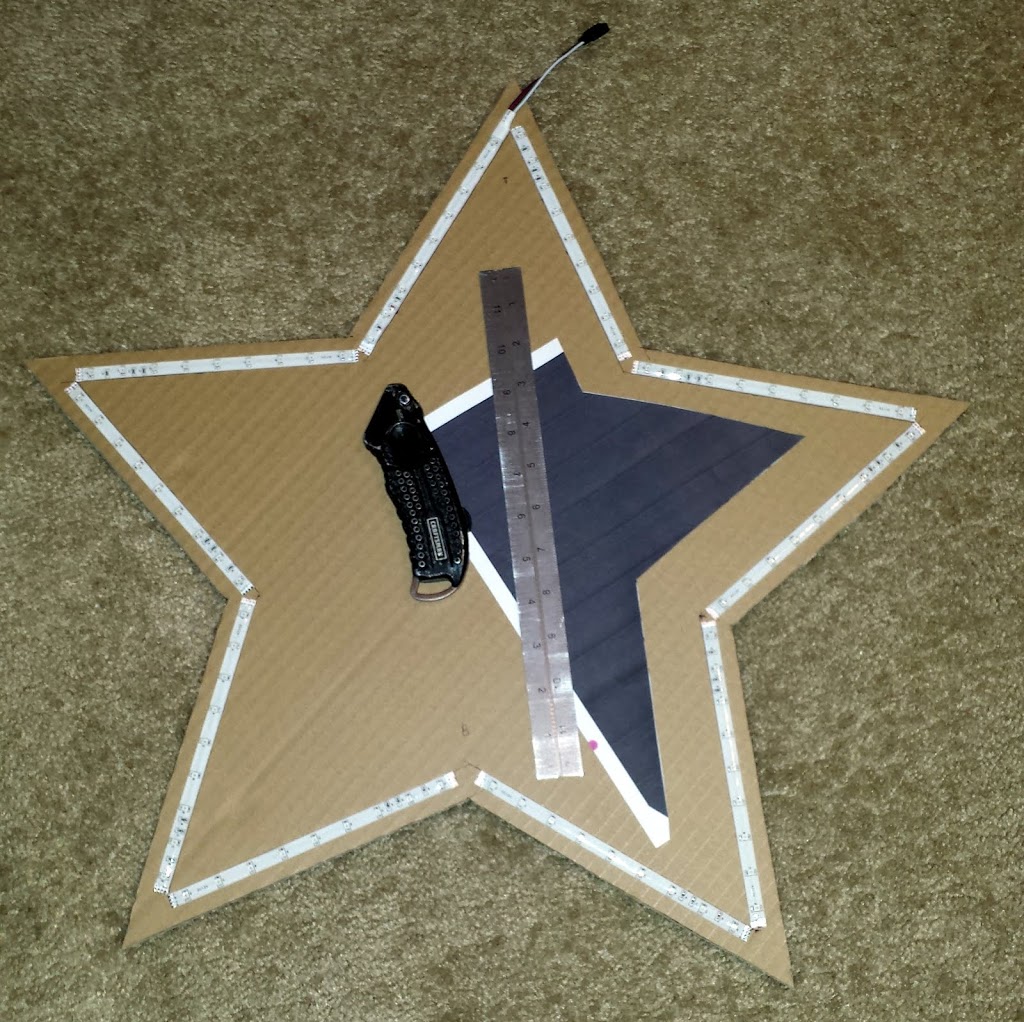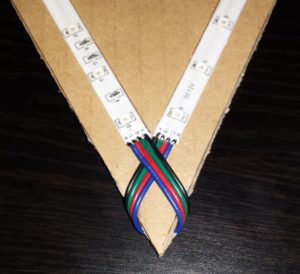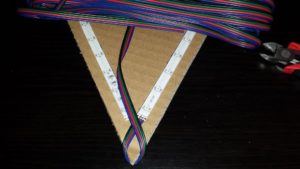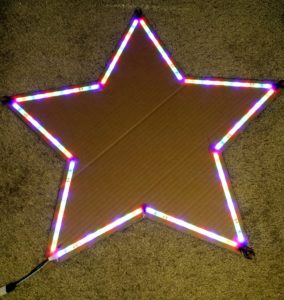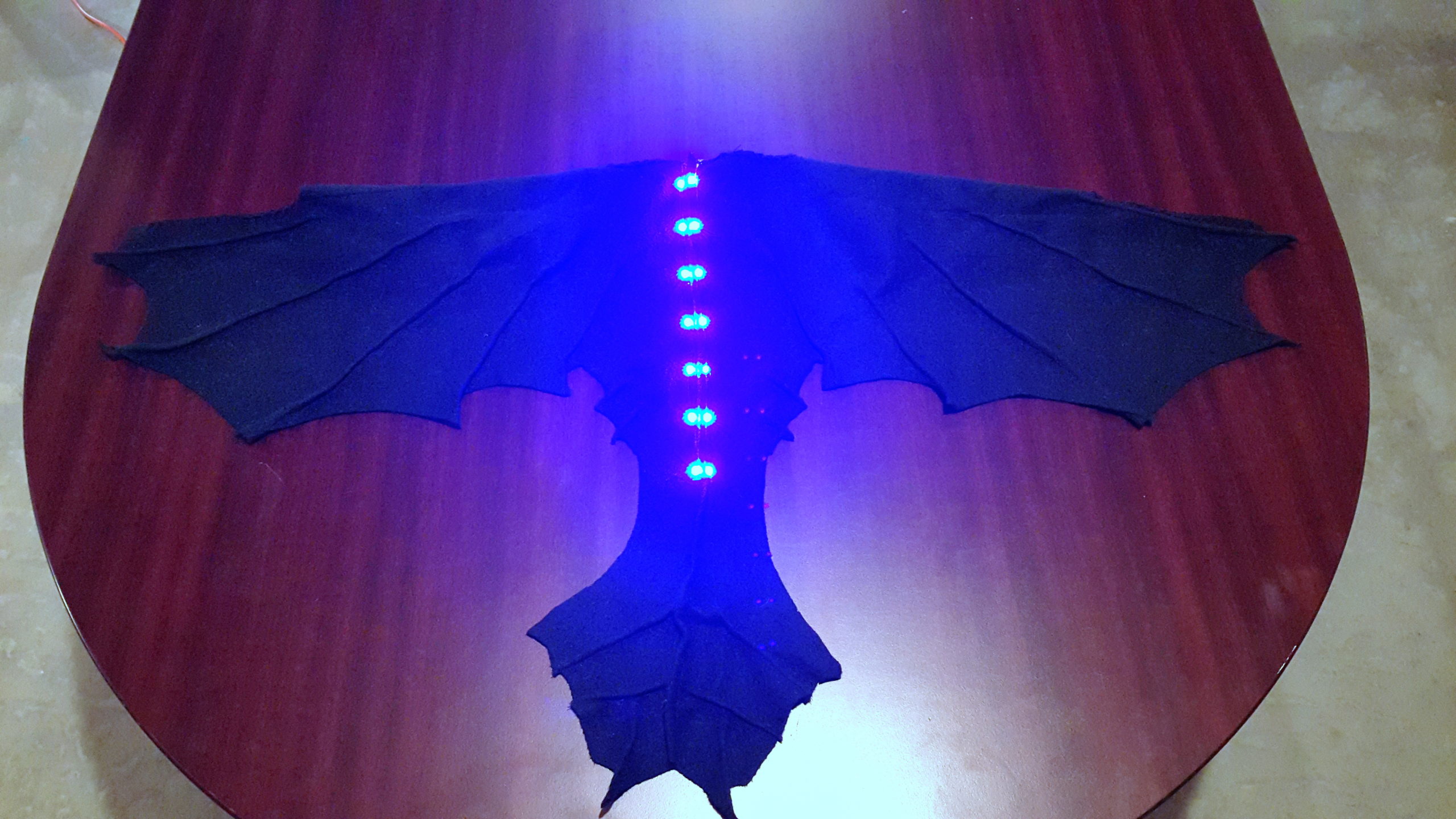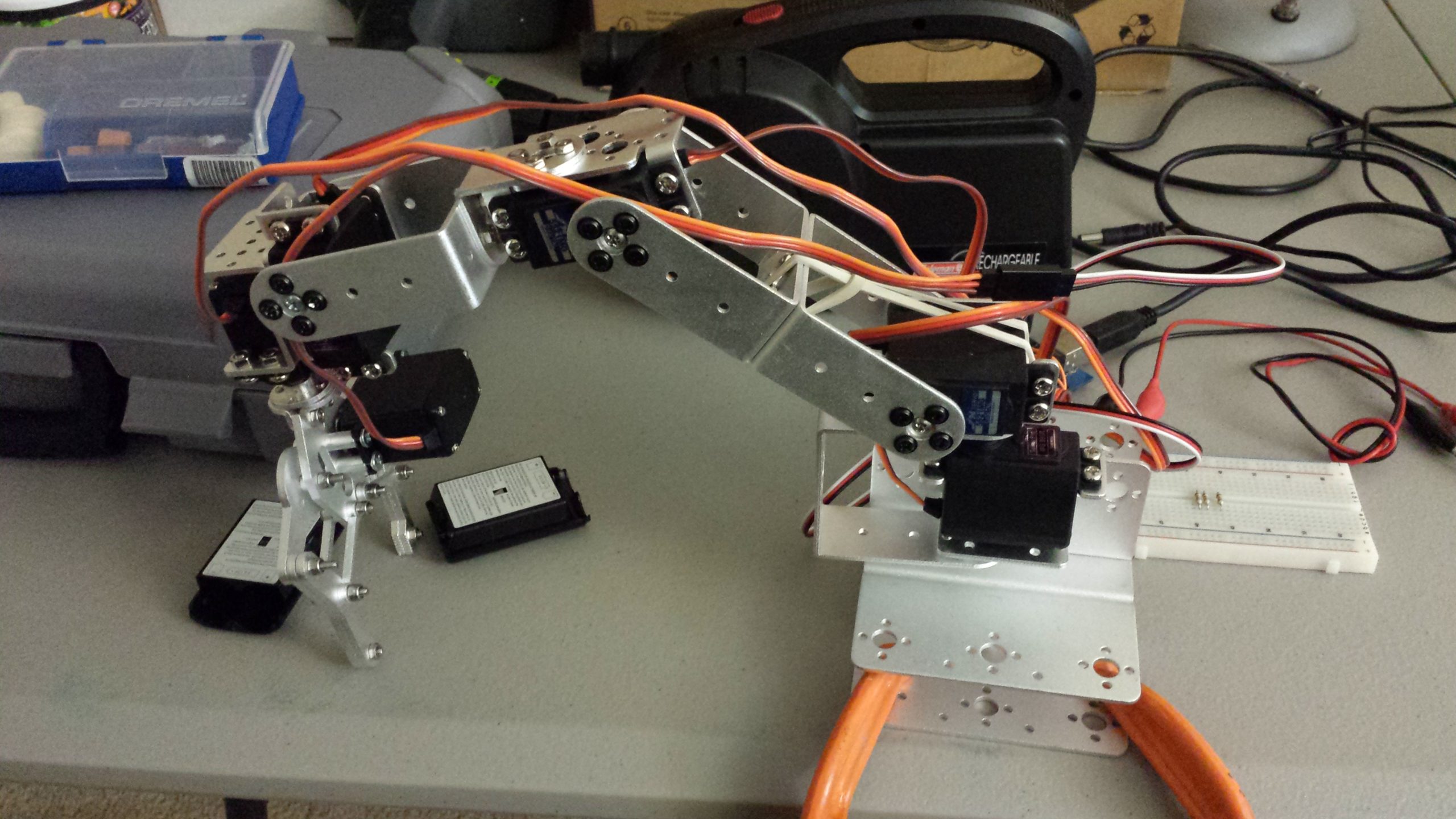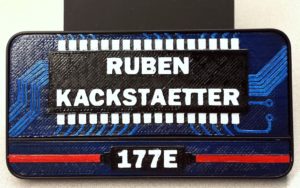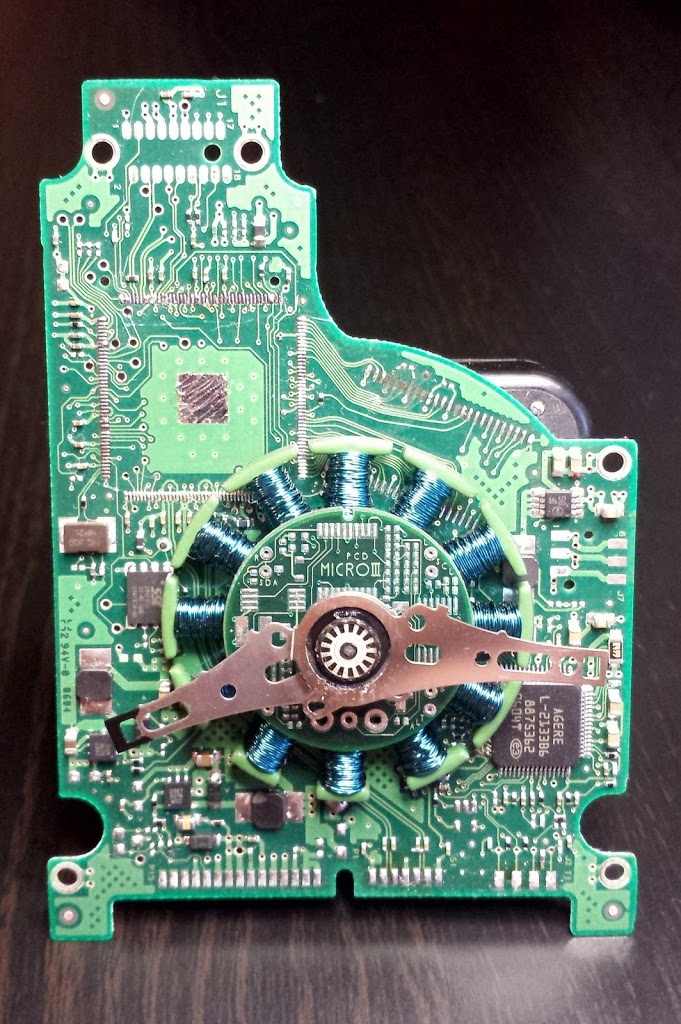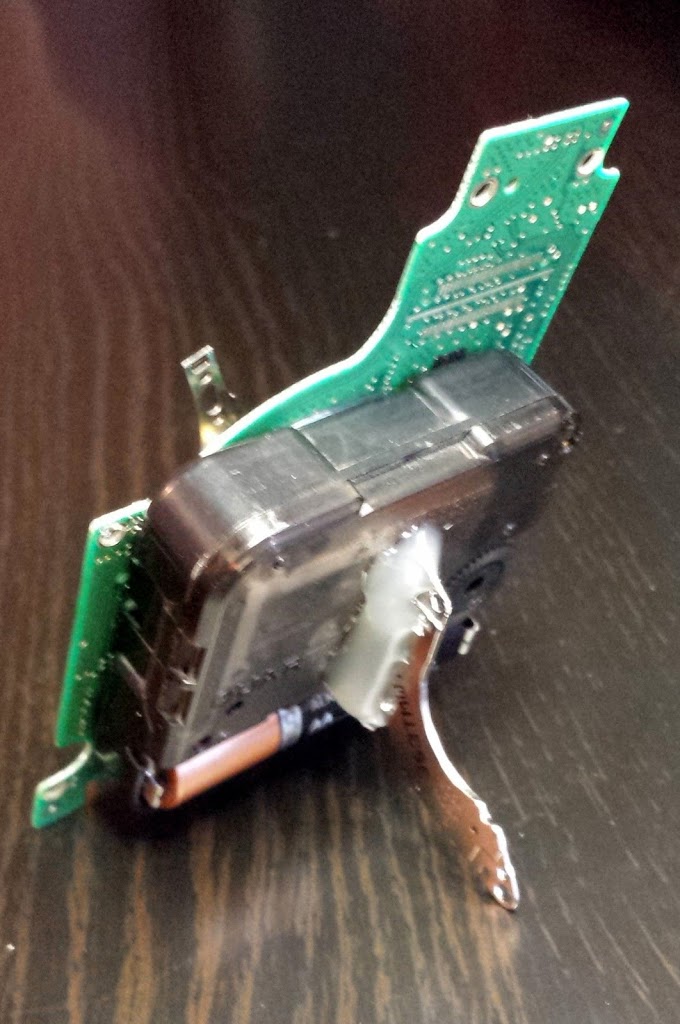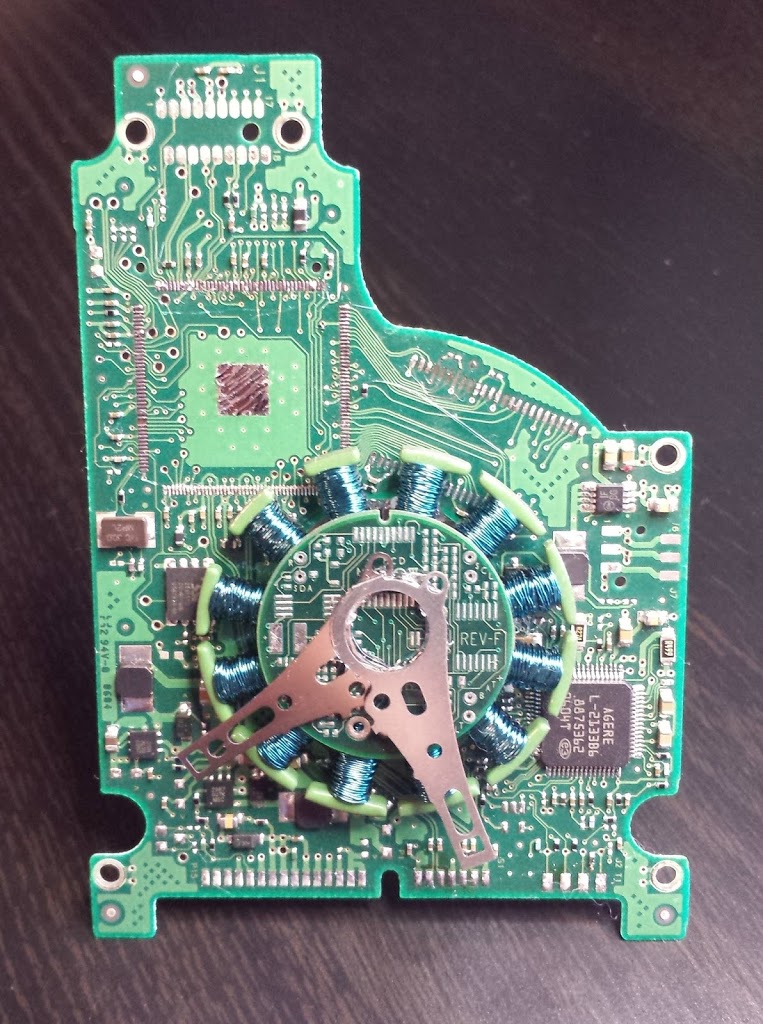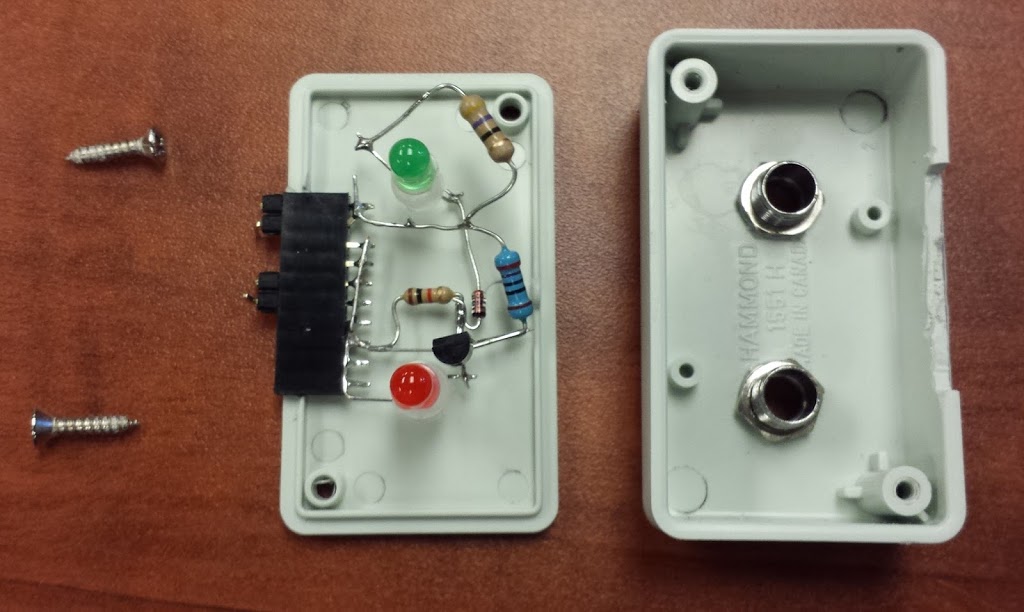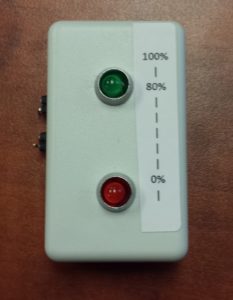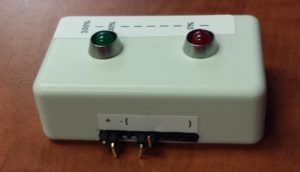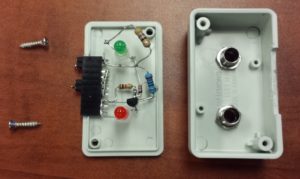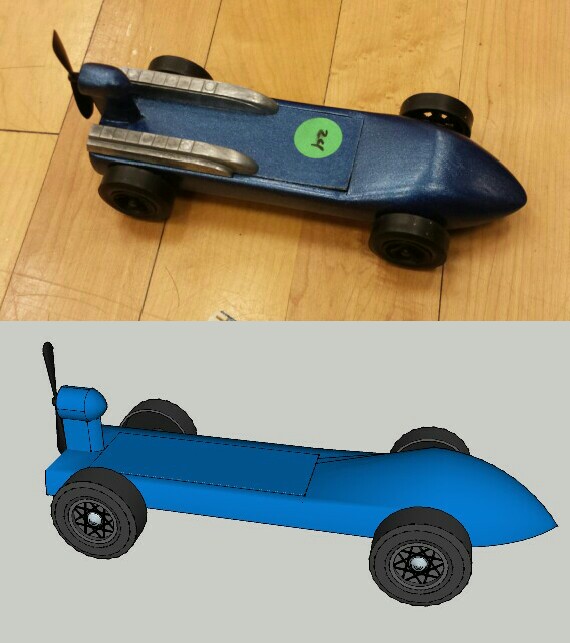It is nearing Christmas time again.
Last year, I was in an apartment that was doing a Christmas Light Decoration Competition. The first three winner received a discount on the next months rent.
So I decided to order some RGB LED strips from banggood.com and make some really cool IR controllable stars.
The process was simple, if not a bit tedious…
First, I measured the length of the smallest section I could get from the LED strop. Then I made a pattern, on a regular sheet of paper, that would give me the angles and length for each point in the star.
Then, I traced the angles on a piece of cardboard, cut the star out, and placed the sections of LED strips, to make sure everything fit.
Here is a picture of the star, the template, the tools I used, and the LED strips in place.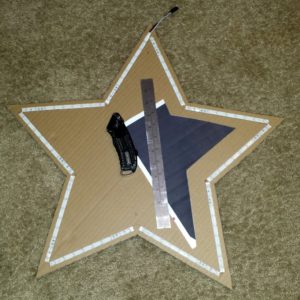
Now all that is left is to solder all the LED segments together.
This was by far the most tedious part.
And here it is all lit up.
And, why only make one when I can make three!
So Here is our final apartment balcony.
